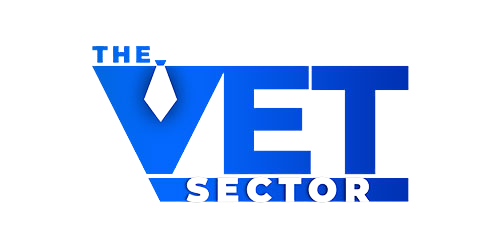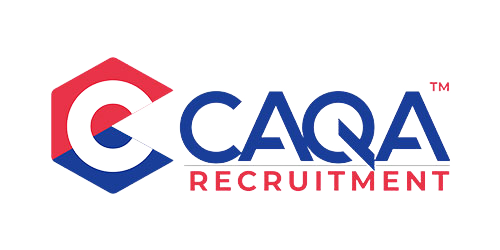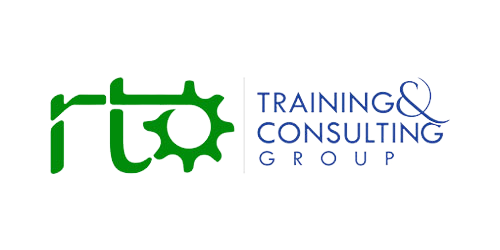In a bustling automotive workshop at a regional training centre, instructor James McNally moves between diagnostic equipment and a partially disassembled engine, guiding his students through a complex troubleshooting sequence. With 18 years of industry experience before becoming a trainer, he bridges theoretical knowledge and practical application seamlessly, translating technical manuals into hands-on skills that his students will take directly to the workplace.
"I could earn $40,000 more annually if I went back to the industry," James admits during a rare quiet moment between classes. "But watching my students master these skills and knowing they'll be job-ready from day one, that's something money can't buy."
James represents the frontline force in Australia's vocational education and training sector, an army of trainers and assessors who quietly shape the nation's workforce behind classroom doors and in training workshops across the country. While policy discussions often revolve around funding models, qualification frameworks, and industry partnerships, it's these educators who ultimately determine whether graduates have the skills employers desperately need.
The scale of their impact is staggering. Australia's VET sector employs over 246,000 people, including an estimated 71,379 trainers and assessors, nearly 30% of all VET employees. These trainers are responsible for skilling and upskilling 4.2 million learners annually, making them the critical link between training packages and workplace capabilities, between student potential and industry expectations.
Yet despite their pivotal role, VET trainers largely remain unsung heroes, facing mounting challenges that threaten both the quality and sustainability of Australia's skills development system. As the nation grapples with critical workforce shortages and rapid technological change, the spotlight on these essential educators grows increasingly urgent.
More Than Just Teaching: The Unique Role of VET Trainers
The role of a VET trainer differs fundamentally from other educational positions, requiring a distinctive blend of capabilities that few professionals naturally possess. Unlike university lecturers, who are focused primarily on theoretical knowledge and conceptual understanding, VET trainers are practitioners first, electricians, nurses, chefs, or IT specialists who have transitioned from industry to education to pass on their craft.
"What makes vocational training unique is that we don't just teach about things, we show how to do things," explains a senior hospitality trainer with decades of industry experience. "I don't lecture on knife skills; I demonstrate them, guide students through practice, correct their technique, and assess their capability against industry standards. This practical pedagogy requires both deep technical knowledge and specialised teaching skills."
This practitioner-based approach forms the foundation of effective vocational education. Quality trainers teach through demonstration and guided practice rather than primarily through lecture. They show welding by laying down a perfect bead, guide healthcare students through patient positioning with actual equipment, or troubleshoot networking problems in real time. This hands-on pedagogy represents vocational education's distinctive strength, making trainers the linchpin of its effectiveness.
Beyond technical instruction, trainers serve as industry guides and professional mentors. They interpret workplace culture, explain unwritten industry expectations, share insider knowledge about employer preferences, and help students navigate the transition from classroom to work environment. This guidance proves particularly valuable for learners without prior exposure to their chosen field, including young people, career changers, and international students.
The trainer's role extends further into assessment and quality assurance, ensuring that students can genuinely perform to industry standards rather than simply demonstrate theoretical understanding. This authentic assessment responsibility requires trainers to maintain clear-eyed professional judgment while supporting student development, creating fair evaluation situations that accurately measure workplace-relevant capabilities.
This multifaceted role stands at the intersection of technical expertise, teaching skill, industry currency, and professional mentorship, a combination that few naturally possess without dedicated development and support.
The Numbers Don't Lie: How Trainer Quality Directly Impacts Outcomes
While the importance of trainer quality might seem intuitive, research now quantifies its substantial impact on student outcomes. A 2022 National Centre for Vocational Education Research (NCVER) study found that 85% of VET graduates who rated their trainers as "excellent" secured employment within six months of completion, compared to just 60% for those who rated their trainers as "average" or "poor."
This 25 percentage point difference represents thousands of individual career opportunities gained or lost based significantly on trainer quality. The same study found that program completion rates drop to approximately 40% when students rate trainer quality as low, a statistic with enormous implications for both individual students and the efficiency of Australia's VET investment.
Several factors explain this substantial impact. High-quality trainers bring current industry experience that ensures students learn relevant, up-to-date skills aligned with employer needs. This currency might manifest as a construction trainer teaching modern sustainable building techniques, a healthcare instructor demonstrating the latest infection control protocols, or an IT educator covering emerging cybersecurity approaches.
Quality trainers also excel at adapting instruction to diverse learning needs, recognising that VET cohorts typically include individuals with widely varying backgrounds, prior knowledge, learning preferences, and career goals. The diversity of the trainer role is significant: trainers deliver to a wide range of learners, including those from equity cohorts, international students, and learners at risk of disengagement.
"In any given class, I might have a school-leaver with no industry exposure, a mid-career changer with transferable skills but no specific knowledge, and an international student with a technical background but language challenges," explains a trainer in information technology. "Helping each of them develop vocational competence requires completely different approaches tailored to their starting points and learning styles."
Perhaps most importantly, skilled trainers develop the tacit knowledge and professional judgment that distinguish truly workplace-ready graduates. Beyond teaching specific procedures or techniques, they convey the decision-making processes, troubleshooting approaches, quality standards, and situational awareness that characterise expert practitioners.
For employers, these differences translate directly to workplace readiness. The 2023 Australian Industry Group survey found 70% of businesses reported difficulty hiring VET graduates with "job-ready" skills, with many specifically citing inconsistent training quality as a key factor. This preparation gap creates immediate productivity challenges as new hires require extensive additional training, closer supervision, and more limited responsibilities than properly prepared graduates.
The Quality Profile: What Makes an Exceptional VET Trainer
Understanding what constitutes trainer quality provides the foundation for addressing current challenges and enhancing VET outcomes. While individual fields have specific requirements, several core characteristics consistently distinguish exceptional VET trainers across disciplines.
Current Industry Expertise and Authentic Experience
Industry currency forms the bedrock of effective vocational training. The Australian Skills Quality Authority (ASQA) formally requires that trainers maintain up-to-date knowledge and skills in their field through ongoing professional development and industry engagement. This requirement recognises that technical practices, equipment, materials, regulations, and workplace expectations evolve continuously across industries.
As of February 2019, 93.3% of VET trainers held at least the Certificate IV in Training and Assessment, which is the minimum qualification required for unsupervised teaching. However, qualifications alone don't ensure currency, trainers must continually update their industry knowledge and skills to remain effective.
Beyond general currency, the depth of authentic experience significantly enhances training quality. Trainers who have worked extensively in their field bring a nuanced understanding of how theoretical knowledge applies in varied real-world situations. They can share illustrative examples, explain common pitfalls, demonstrate subtle techniques, and convey the professional judgment that distinguishes expert practitioners.
"There's a world of difference between a trainer who's actually spent years solving real problems in industry versus someone who just knows the textbook procedures," observes an employer who regularly hires VET graduates. "The graduates from experienced trainers can troubleshoot, adapt to different situations, and understand why we do things in certain ways, not just follow step-by-step instructions that fall apart when anything unexpected happens."
Pedagogical Skill and Adaptive Teaching Capability
Technical expertise alone, however valuable, doesn't ensure effective knowledge transfer. Exceptional VET trainers combine industry knowledge with well-developed pedagogical skills, the ability to explain complex concepts clearly, demonstrate techniques effectively, structure learning progressively, provide constructive feedback, and assess competence accurately.
Quality trainers demonstrate particular skill in breaking down complex vocational tasks into manageable components that build toward integrated performance. They create developmental sequences that gradually increase in complexity and authenticity, ultimately preparing students for workplace-level performance.
Most VET teachers are qualified only to Certificate IV level in Training and Assessment, and there is ongoing debate about whether higher-level qualifications would improve teaching quality. While no firm evidence yet links higher qualifications to better outcomes, there's growing recognition that pedagogical development specific to vocational contexts is essential for trainer effectiveness.
Emotional Intelligence and Relational Capability
The human dimension of training, less tangible but equally crucial, encompasses the emotional intelligence and relational capabilities that distinguish truly transformative vocational educators. Quality trainers demonstrate genuine interest in student success, create psychologically safe learning environments, motivate through challenging moments, and build the confidence essential for workplace transition.
"Technical skills can be taught relatively easily to someone who's engaged and confident," notes a training manager with experience across multiple RTOs. "But if students don't believe they can succeed, or if they're too intimidated to ask questions or try new techniques, the learning simply doesn't happen. Great trainers create environments where students feel safe to make mistakes while being challenged to reach industry standards."
Particularly in vocational contexts where many students have experienced previous educational challenges, the trainer's ability to build trust and belief in capability can prove transformative. This confidence directly impacts employment outcomes, as graduates who believe in their capabilities project competence in interviews and willingly tackle workplace challenges.
The Perfect Storm: Challenges Facing the VET Trainer Workforce
Despite widespread recognition of its importance, trainer quality faces significant challenges within Australia's VET sector. These challenges stem from multiple sources and create substantial barriers to consistently high-quality vocational instruction across disciplines and providers.
Recruitment and Retention Pressures
The VET sector faces growing difficulties attracting and retaining qualified trainers, particularly in high-demand technical fields. The workforce is aging, with a significant proportion of experienced trainers approaching retirement. Meanwhile, strong competition from the industry creates substantial barriers to recruiting their replacements.
This competition creates a fundamental economic challenge: many skilled practitioners can earn substantially more by working in their industry than by teaching others. A master electrician or senior digital specialist might command $100,000 to $150,000 in industry positions compared to significantly lower salaries in training roles. This earnings gap discourages many experienced professionals from transitioning to teaching, particularly mid-career practitioners with financial commitments.
"I'd love to teach more, but I simply can't afford the pay cut," admits a cybersecurity specialist who occasionally delivers guest workshops. "With a mortgage and family responsibilities, the salary difference is just too significant, even though I find teaching incredibly rewarding."
The situation creates a concerning selection dynamic where VET may disproportionately attract either early-career practitioners with limited industry experience or those nearing retirement, neither group necessarily bringing the optimal combination of current expertise, energy, and teaching commitment.
Casualisation and Workload Pressures
Over half of VET trainers are employed part-time, and casualisation is rising across the sector. This employment model creates instability and reduces institutional investment in trainer development. Casual trainers often receive payment primarily for direct teaching hours without compensation for preparation, professional development, or program improvement.
"As a casual trainer, I'm essentially paid only for the hours I stand in front of students," explains an IT instructor who works across multiple providers. "The research to stay current with industry developments, the time creating engaging learning materials, the individual support for struggling students, all of that is essentially unpaid work. It's unsustainable long-term, no matter how committed you are."
Even for permanent staff, heavy teaching loads allow insufficient time for preparation, individualised student support, assessment design, and professional learning. Many trainers report responsibility for 25 or more contact hours weekly alongside substantial administrative duties, leaving minimal capacity for the reflection, industry engagement, and course development that enhance teaching quality.
Currency and Professional Development Challenges
Maintaining industry currency presents growing challenges as technological change accelerates across virtually all sectors. Digital transformation is a growing focus throughout vocational education and employment, but many trainers struggle to keep pace with rapidly evolving technologies and workplace practices.
While most RTOs recognise the importance of digital strategies, 80% admit to having no formal AI plan, despite acknowledging its potential to enhance course content and student experience. This technology gap reflects broader challenges in maintaining currency across rapidly changing industries.
Funding constraints significantly limit professional development opportunities that would help trainers maintain industry currency. Resources for industry placements, conference attendance, targeted courses, or equipment training have declined in many institutions. Without these updating mechanisms, even initially well-qualified trainers gradually lose touch with evolving industry practices, creating growing gaps between their instruction and workplace requirements.
Regulatory and Quality Assurance Challenges
Regulatory frameworks designed to ensure minimum standards face implementation challenges that allow quality variations to persist. In 2022, about 20% of audited RTOs were found non-compliant with trainer qualification standards, often due to outdated skills or insufficient professional development.
These compliance issues particularly affect private RTOs operating in competitive markets with strong financial pressures. While many private providers maintain high standards and invest appropriately in trainer quality, the sector also includes operators who minimise costs by employing underqualified trainers, providing minimal professional development, or allocating excessive student loads.
The fragmentation of the VET system itself, spanning public providers, private RTOs, enterprise providers, and community organisations, creates inconsistent approaches to trainer development, varying quality standards, and limited sharing of effective practices.
The Path Forward: Building a World-Class Trainer Workforce
Addressing these challenges requires coordinated action across multiple dimensions, including recruitment, development, working conditions, and system design. Several promising approaches emerge from both Australian innovations and international best practices.
Strategic Recruitment and Career Pathways
Expanding the trainer talent pool requires creative approaches that overcome current economic disincentives for industry professionals considering teaching careers. Several strategies show particular promise:
Competitive compensation models that more closely align trainer salaries with industry earnings, particularly in high-demand fields with significant private sector competition. This alignment might include base salary increases, industry experience recognition in placement decisions, performance-based incentives for exceptional teaching, and explicit career progression pathways with corresponding compensation growth.
Flexible employment arrangements that allow skilled practitioners to combine teaching with continued industry work, maintaining both income levels and professional currency. These arrangements might include part-time positions, trimester-based contracts allowing industry work during breaks, consulting allowances within teaching roles, or secondment programs where employers release staff for teaching periods with salary supplementation.
Structured entry pathways that support the transition from industry expert to skilled educator through mentoring, graduated responsibilities, and specialised development. A "trainer cadetship" model could pair industry professionals with experienced educators, providing paid time for pedagogical development while leveraging technical expertise.
"We need to think beyond the traditional binary choice between industry and teaching," suggests a workforce development specialist. "Creating hybrid roles that allow professionals to maintain industry connection while sharing their expertise through teaching offers the best of both worlds, keeping trainers current while bringing top talent into vocational education."
Comprehensive Professional Development
Ensuring trainers maintain both industry currency and teaching capability requires systematic professional development approaches embedded in regular work rather than treated as occasional activities:
Mandated industry immersion programs that return trainers to workplace environments regularly through structured arrangements like annual industry placements, workplace observation periods, project participation, or job shadowing. These immersion experiences should include reflection components that explicitly connect workplace observations to training implications.
Communities of practice that connect trainers across institutions within specific industry areas, creating collaborative learning opportunities focused on both technical updates and teaching approaches. These communities might share resources, discuss emerging trends, collaborate on assessment design, or engage with industry representatives to maintain collective currency.
Pedagogical development focused specifically on vocational teaching approaches rather than generic educational methods. This development should address the distinctive challenges of teaching practical skills, integrating theory with application, designing authentic assessment, and supporting diverse learner cohorts typical in VET environments.
Systemic Enablers and Quality Mechanisms
Beyond individual trainer development, broader system changes can create environments where quality teaching flourishes:
Workload models that explicitly allocate time for professional development, industry engagement, and teaching improvement rather than maximising direct instruction hours. These models should recognise that effective vocational teaching requires substantial non-classroom time for currency maintenance, resource development, and student support.
Enhanced regulatory approaches that focus more explicitly on evidence of teaching quality rather than primarily on documentation compliance. These approaches might include student outcome measures, employer feedback mechanisms, graduate capability assessments, or peer review processes that evaluate actual teaching and assessment practice.
A national VET Workforce Quality Strategy, as has been proposed, could standardise core professional capabilities, improve data collection, and support ongoing development for trainers and assessors. This coordinated approach would address the fragmentation that currently limits system-wide improvement in trainer quality.
Recognition systems that celebrate and reward exceptional vocational teaching increase both status and retention. A national "VET Trainer Excellence" program could highlight outstanding practitioners, sharing their approaches while elevating the profession's perceived value.
Looking to the Future: Trainers as Drivers of Economic Prosperity
The quality of VET trainers represents not just an educational concern but a national economic and social imperative. With over 300,000 job vacancies reported in 2023 and billions contributed to the economy by VET graduates, the stakes for getting trainer quality right have never been higher.
As Australia navigates complex workforce challenges, critical skills shortages, technological transformation, and international competition, the capability to develop work-ready graduates efficiently and effectively becomes increasingly crucial. This capability fundamentally depends on the quality of those standing before vocational classrooms and workshops daily, translating industry expertise into learner capability.
"We need to recognise that VET trainers aren't just teaching technical skills, they're building Australia's economic future one graduate at a time," emphasises a VET policy specialist with decades of sector experience. "Every capable graduate who enters the workforce as a result of quality training contributes to productivity, innovation, and global competitiveness. When we invest in trainer quality, we're investing in national prosperity."
The challenges affecting trainer quality are substantial but solvable with appropriate prioritisation and investment. By developing recruitment approaches that attract top industry talent, creating development systems that maintain currency and teaching capability, and establishing working conditions that support quality instruction, Australia can build a vocational trainer workforce that rivals any globally.
Back in that automotive workshop, James McNally watches with satisfaction as his students diagnose a complex engine management issue, applying theoretical knowledge to a real-world problem. "This is what it's all about," he says quietly. "When they can solve problems independently, using the skills and judgment I've helped them develop,that's when I know they're ready for industry."
His words capture the essence of quality vocational training: the transfer not just of technical procedures but of professional capability and confidence that transforms novices into work-ready practitioners. As Australia confronts unprecedented workforce challenges, these transformations represent perhaps our most powerful tool for building the skilled workforce needed for future prosperity. And at the centre of this transformation stand the trainers, the hidden heroes of Australia's skills future.


































